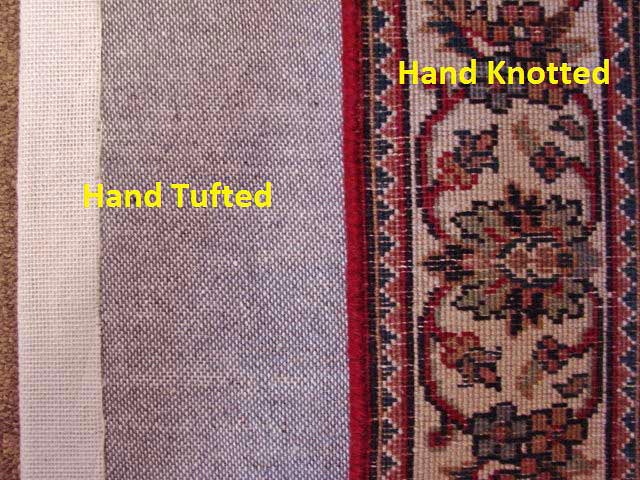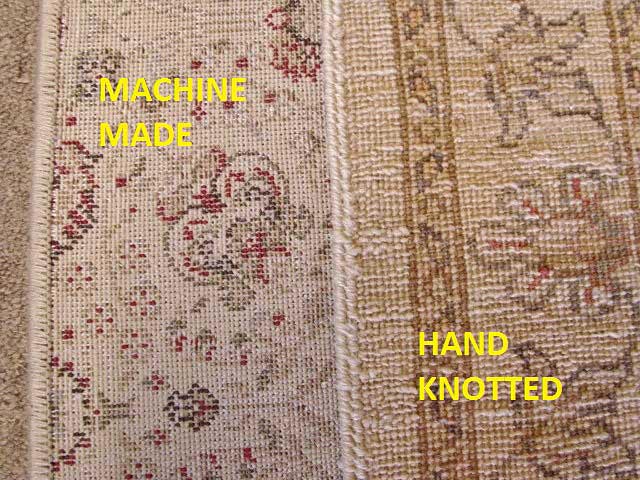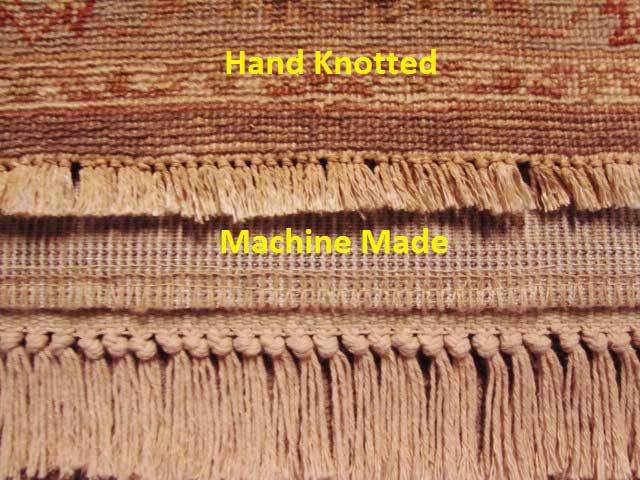1. How does rug quality affect rug price?
For hand-knotted rugs, quality basically depends upon factors like knot-count (knots in 1"x1" square area), How intricate or detailed the pattern is, how fine or expensive is the wool/silk used, how many colors are used, etc. Higher these values, higher is the quality and, therefore, the price. In fine rugs, labor (in putting the knots) alone may be 75 - 85% of the cost whereas raw materials may only be 15 - 20% and the rest being finishing, shipping, other overheads, etc. However, many other factors may greatly affect the quality vs. price question, like: is the wool hand-spun or mill-spun, are the dyes used synthetic or vegetable, kind of wash or finish given (Silver Wash, Tea-wash, Antique, etc.), is the rug commercially produced or a tribal rug, is it exotic or the supply limited, country or the region it comes from, etc., etc. Like any work of art, there is no simple yard-stick to assess quality & price of hand-knotted rugs. This is the reason we recommend shopping at places which are well-established , trustworthy and stand behind their rugs.
2. What is the difference between a hand knotted, hand tufted and machine made rug?



In a strict sense, an 'Oriental Rug' is a hand-knotted rug with pile or nap on the face side, with the exception of flat-weaves like Dhurrie, Soumaks, Needle Points, Chain-stitches etc. Sometimes, some other types of rugs are also categorized as 'Hand-made', like hand-tufted rugs. One simple guideline is: If you cannot see the pattern on the back, it is not a hand-knotted rug. Instead, you will see a fabric or similar backing (See picture 1). However, you can also see the pattern at back of most machine-made (or Machine- loomed) rugs but (a) the back of a machine-made rug (Picture 2) will be more uniform or perfect (Or machine-made like) whereas hand-knotted one will show imperfections & irregularities, (b) side edge (binding) on machine-made will again be perfectly done (Picture 2) whereas it would not be so in hand-knotted one, (c) if you look closely, the fringes on a machine-made will be sewn on to the rug ends (Picture 3) whereas they would be a part of the hand-knotted rug (Actually, warp threads, extending beyond the pile-edge form the fringes), (d) the back of a machine-made is generally rougher than a hand-made one.
3. What are the differences in the fibers used in rug making?
Most hand-knotted rugs have wool pile (nap) and cotton foundation. However, there are rugs which have wool or silk in both pile and foundation and other combinations of these and they generally tend to be more expensive. Wool pile rugs are generally more durable, stain resistant, easier to maintain & clean, etc. Machine-made rugs mostly have synthetic pile (Polypropylene, Polyester, Acrylic, etc.) but some are also made with wool pile. Flat-weaves are generally made of wool (Surface fiber with pattern - foundation may be other fibers) but also use cotton, jute, sisal, etc.
4. What is the difference between pile rugs and flat-weave rugs?
Pile rugs have pile or nap on the face which is generally knotted to the foundation threads (as in hand-knotted rugs) or anchored to the foundation fabric by some means like adhesives (as in hand- tufted rugs) whereas Flat-weaves don't have any pile and are either woven like a cloth (Kilims, Soumak, Dhurries, etc.) or are made by embroidering (Chain-stitches) or by needling (Needle-points) or by hooking (Hooked rugs) the decorative threads on to a piece of cloth or backing.
5. What are acceptable "defects" in rugs?
Unlike machine-made rugs (or anything else which is made by machines), hand-knotted rugs will always have some minor imperfections and that's what makes them distinct from machine-made ones, more valuable and much-sought-after. For example, a rug may not have a perfect straight-line edge, or the knots at the back may look uneven or there may be slightly different-colored bands in the ground or border color (known as 'Abrash'), etc. ,etc. In fact, the latter is intentionally duplicated in rugs made currently to give them look of an old/antique rugs. Unless they are excessive and undermine the character of that particular type of rug, they should be acceptable. However, what is acceptable to one may not be so to another person. So use your own judgment and opinion of an experienced store personnel.
6. Why are hand knotted rugs dark from one side but lighter from other side?
All hand-knotted rugs look darker from one side and lighter from the other because the pile on the rug is not standing vertically up but is inclined towards one side. The side to which it is pointing will be the darker side. This gives you an option to place the rug in a position you want it to look darker or lighter.
7. What is the meaning of oriental rug patterns?
Names like Kashan, Saroukh, Heriz, Bokhara, etc., etc., generally relate to the city/town/region of a country where that kind of pattern or weave originated and was generally made. However, presently, it is no longer true since a typical Kashan pattern can come from India, China or Pakistan.
Call (404)367-0001 or use Contact Us Form to get answers to any other questions you may have.